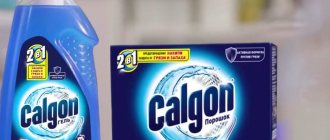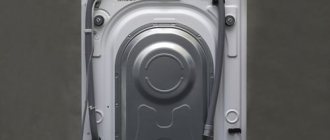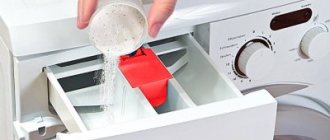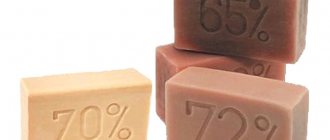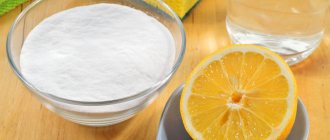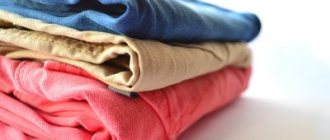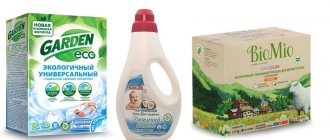Calgon is a product that is added to the washing powder, or to the drum if Calgon gel is used. It makes no sense to wash things without powder with Calgon, since it is used to prevent washing machines. Not everyone knows how to use Calgon correctly, when to use it and when it is better to abstain, whether the product is effective or not, and how it generally works. Let's look at all these factors below.
What is Calgon and how to use it
Advertisers and as an effective means of maintaining the washing machine. The use of Calgon reduces the amount of basic detergents (powder, soap) that needs to be taken per wash.
The product prevents the appearance of scale on the heating element of the washing unit, as well as on its other parts. This helps extend the life of the device, protecting it from premature breakdowns.
Also protects things from scale. It settles on the laundry during washing, causing it to turn gray each time. Allows you to better remove stains, especially those that are difficult to remove. Additional advantages include:
- maintaining cleanliness inside the drum;
- removing unpleasant “damp” smell from the drum;
- water softening;
- reducing the consumption of laundry detergents.
Advertising company
Each of us has at least once heard about such a “savior” of washing machines as “Kalgon”. Even those who have nothing to do with laundry and housekeeping in general remember the sensational commercial. Indeed, “Kalgon”, reviews of which are very contradictory, is an extremely promoted product. Many people have been using this product with every wash for years, simply believing the convincing advertising. Everyone is familiar with the problem of scale, and Calgon, according to the manufacturer, can save us from these inconveniences forever and extend the life of the washing machine.
Needless to say that in just a few years the company's sales have increased more than 20 times? So should you believe the advertising of Calgon? Reviews indicate that it is not easy to answer this question unequivocally. There are very different opinions on this matter, and one contradicts the other.
Types of Calgon
The product is presented on the market in three forms - liquid Calgon (in the form of a washing gel), powder and tablets. The most convenient form factor is a tablet. Tablets are added without taking into account the level of hardness. The number of tablets in packages varies greatly - from 12 pcs. and more.
"Calgon" gel is supplied in bottles of various capacities, the minimum volume is 0.75 liters. The liquid should be poured directly into the drum. The downside is that it is easy to spill if you accidentally drop the bottle on the floor. The advantage is that it starts working immediately, instantly dissolving in water.
Powder Calgon is the most common and popular. It is mixed in one tray along with washing powder, entering the bowels of the machine.
Forms
The drug Calgon is available in several different forms:
- Powder. Packaged in cardboard boxes and plastic soft packaging of different weights. The inconvenience of this option is the difficulty of dosing.
- Pills. Sold in boxes. Minimum packaging – 12 tablets in one package. The advantage of this option is that it is impossible to make a mistake with the dosage.
- Gel. Sold in polymer bottles and canisters of various sizes. The gel is convenient to use, the packaging is compact, and in addition, incomplete dissolution of the drug is avoided.
Mode of application
There are detailed instructions on the packaging of the product, and according to it:
If the water is of medium hardness, then the drug should be added to 1/3 of a glass, the volume of which is 96 ml. Measuring cup included. That is, only 32 grams of powder should be added per wash;
If the water is hard, then you need to pour in 2/2 cups, that is, 64 g; If the water is very hard, then you need to fill a full glass
Important! If Calgon is not in powder form, but tableted, then, regardless of water hardness, use one tablet per wash cycle.
How to determine water hardness
It is not difficult to determine the hardness of home water and the presence of large amounts of chlorine, calcium and magnesium in it. Just take a piece of laundry soap and crumble it into a glass of cold water. If the soap crumbs do not dissolve after half an hour, then the water is extremely hard and saturated with magnesium and calcium, which will cause scale when washing in a machine without Calgon.
Or use rapid tests that many manufacturers offer. You can easily find such a rapid test in a pet store.
Is Calgon effective?
There is an opinion that the product is not as effective as the manufacturers say. According to some consumers, using Calgon does not provide any effect.
The fact is that the composition of this product largely coincides with the composition of ordinary powder. In other words, the softening components are identical to the elements present in any washing powder for an automatic machine.
Experienced owners of washing equipment confirm this fact. There are also doubts about the protection of the washing machine parts. Some people claim that scale forms on the heating element both with and without Calgon.
Who produces?
The Calgon trademark belongs to the large company Reckitt Benckiser. This company was founded in 1814 in England by entrepreneur Derek Colman. The company was originally called Colman's and was engaged in the production of flour and mustard. In 1840 the company acquired a starch mill and was renamed Reckitt & Sons. Somewhat later, the company’s plant began producing polishing and washing products.
In 1823, the company's management founded a business in Germany producing exclusively cleaning products and various household goods. In the same year, the company for the first time began supplying the market with Calgon, intended for water softening. The composition of this softener was developed by the company’s specialists and remains virtually unchanged to this day.
In 1999, the company merged with the German company Benckiser NV. As a result, a new manufacturer of household chemicals, Reckitt Benckiser, appeared on the market. By this time (since 1994), the company already had an office, including in Moscow.
When using Calgon does not make sense
The use of Calgon is not justified in all cases. It is useless to use this drug if:
- the house has a water filtration system with softening;
- a washing mode with a temperature below 60 degrees is used, since at a low temperature scale particles are not formed.
In addition, any modern detergent in automatic washing machines already contains water softening additives. And if the water hardness in the region is moderate, these additives are enough to prevent scale formation. If the water is hard, then additional softening agents should be used.
Composition of Calgona
The substances included in Calgon help improve the quality characteristics of water for washing in a washing machine. It consists of the following components:
- sodium tripolyphosphate - reacts with calcium ions contained in water and is the basis of a water softener;
- polycarboxylates - make up 30% of the composition;
microcrystalline cellulose - content does not exceed 15%;
- polyethylene glycol - the product contains no more than 5%.
Preventive use of the product
As a preventative measure, carried out independently and regularly by the car owner, simple rules should be followed:
- Use high-temperature washing mode less often. At temperatures above 75 degrees, the salts contained in the water crystallize and turn into harmful lime deposits on its parts;
- At least once every six months it is necessary to clean the machine and wash the filters. If you wash it frequently, then you need to clean the unit at least once every two to three months;
It is advisable to install water filters. They will protect the washing machine from lime and harmful deposits. Water softening is a necessary measure not only for the car, but also for the people living in the house.
Prices
On average, a pack of Calgona can be purchased in the price range from 150 to 200 rubles per 500 grams. With constant use, this amount of product will last you for a month. Thus, you will spend about 2,000 rubles per year. At first glance, not so much, but if you think about the real effect of the product, it turns out that the amount is impressive. If you consider that replacing a heating element will cost you less, on average no more than 1,300 rubles. Let us note that without any cleaning or maintenance, the heating element will serve properly for 3 to 5 years. It turns out that it is easier to change the heating device once every three years than to spend money on useless Calgon.
However, if you still want to somehow protect your machine from scale, you can make the product yourself at home. To do this, just mix sodium tripolyphosphate and soda.
Benefits and harms of Calgon, reviews
Proponents of the product believe that using Calgon means it has a beneficial effect on laundry. According to their observations, white things retain their pristine whiteness. Yes, and wear occurs more slowly. We have already talked about getting rid of scale in washing machines.
At the same time, other opinions about Calgon are being expressed on the Internet. Skeptics consider Calgon useless and of little effectiveness. If the water undergoes rough cleaning and then filters, this product will not be needed. In addition, a good and expensive washing powder itself contains a substance that softens the water and prevents scale in the washing machine.
Some even claim that a thin layer of scale is even beneficial. It cements microcracks, and in the event of sudden temperature changes, it protects heating devices from destruction.
There are also counter-arguments from an economic perspective regarding the price, which does not correspond to the effect obtained from the product. There are even calculations for 5-10 years. The money spent on purchasing Calgon is enough to buy a new washing machine (depending on the brand). The old one will still be in service.
It is better not to wash some things with Calgon - clothes, towels, bedding for newborns, things for people with allergies.
What are its analogues?
Professional anti-scale products usually contain acids. They are the ones who dissolve scale and help clean the machine. They are not used in the process of washing clothes, but separately, starting the cycle in idle mode, that is, with an empty drum.
Almost all descalers contain various acids. But you can periodically use traditional methods, thereby maintaining the cleanliness of the mechanism.
You can fight scale with the help of folk remedies.
Lemon acid
The instructions for cleaning the washing machine from scale with citric acid are not much different. 150-200 g of product is placed in the washing powder compartment. Some people prefer to pour half of the citric acid directly into the drum, but you can do that.
Citric acid can be quite effective in fighting scale. Select the longest one with a temperature of 95º on the program panel. The machine is started idle. After the end of the cycle, the rinse or quick wash mode is additionally started. It is advisable to do this so that the scale particles are thoroughly washed down the drain.
Citric acid is poured into the powder compartment. If the washing machine also needs “impact” disinfection, you can use an additional component – bleach. Citric acid is poured into the same main compartment for detergents.
For disinfection purposes, regular bleach can be added to citric acid. At the same time, a glass of bleach is added to the drum. You should not carry out such cleaning more often than every 3 months. After all, chlorine is more aggressive and can corrode rubber parts.
Vinegar
The description of the manipulations is similar, but there is a slight difference. Approximately 15-20 minutes after starting the cycle, the machine with vinegar (2 glasses) is stopped for an hour (“pause” mode).
Regular table vinegar can help remove scale from your machine. Then the wash continues. Finally, run the system in rinse mode. The degree of contamination of the water in the drum indicates the volume of accumulated debris.
Packaging
- Powder packages are produced in packs weighing 0.55 kg, 1 kg, 1.6 kg.
- Tablets are packaged in quantities of 12, 15, 32, 35, 40 and 70 tablets per pack.
- The gel is bottled in plastic bottles of 0.75, 1.5 and 2 liters.
Regardless of the release form, as long as the dosage indicated on the package is observed, the concentration of active substances in the water of the washing machine will be the same.
Summarize
If you are worried about the condition of your washing machine and want to protect its internal parts from scale formation and at the same time save your family budget, then here are some recommendations:
- Wash less often on modes with temperatures above 40 degrees;
- Use high-quality washing powder;
- Clean with citric acid every 3-6 months.
The essence of washing problems
Due to the use of hard water, at high washing temperatures, scale forms with far-reaching consequences:
- sediment appears on the walls of the pipes, reducing their cross-section;
- pumps work with greater load;
- sometimes in places where the tubes bend, the flow of water is blocked due to plugs formed;
- due to scale, the water heating process deteriorates and electricity consumption increases by 10%;
- heating elements may fail;
- the elasticity of rubber seals and insulators decreases, which is fraught with the appearance of cracks and even ruptures, which means that insulation and sealing suffer;
- corrosion processes are accelerated.
Attention! If the washing unit is damaged for this reason, the service centers do not treat it as a warranty case and are not going to repair it for free.
In addition, hardness salts, interacting with surfactants (surfactants in the composition of many washing powders), produce insoluble compounds.
Not everyone knows that scale forms if the water temperature exceeds 60°C. And if washed at 40°C, it is better to discard the product. But it is sometimes used when flushing pipes of heating systems, adding it to the coolant.
